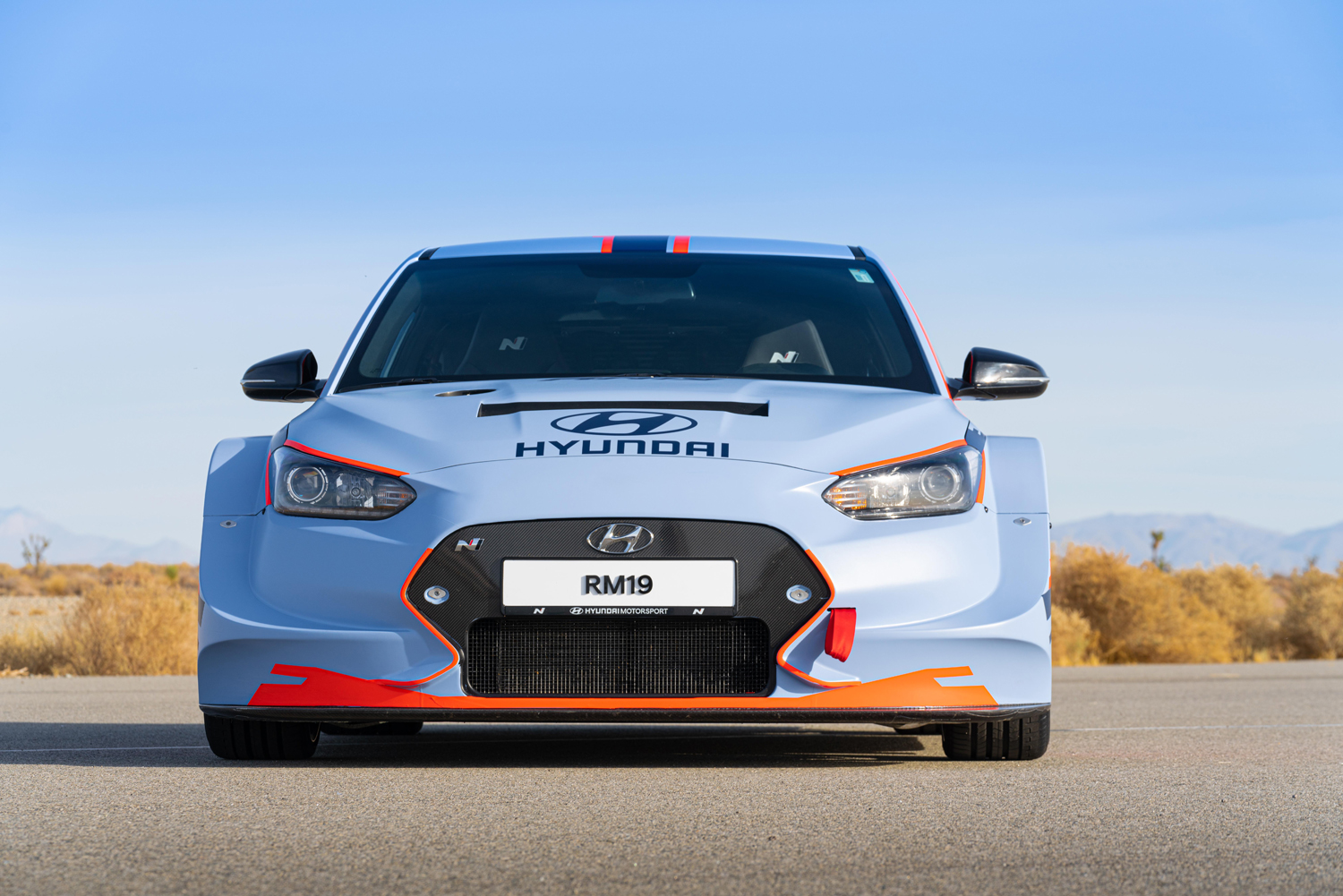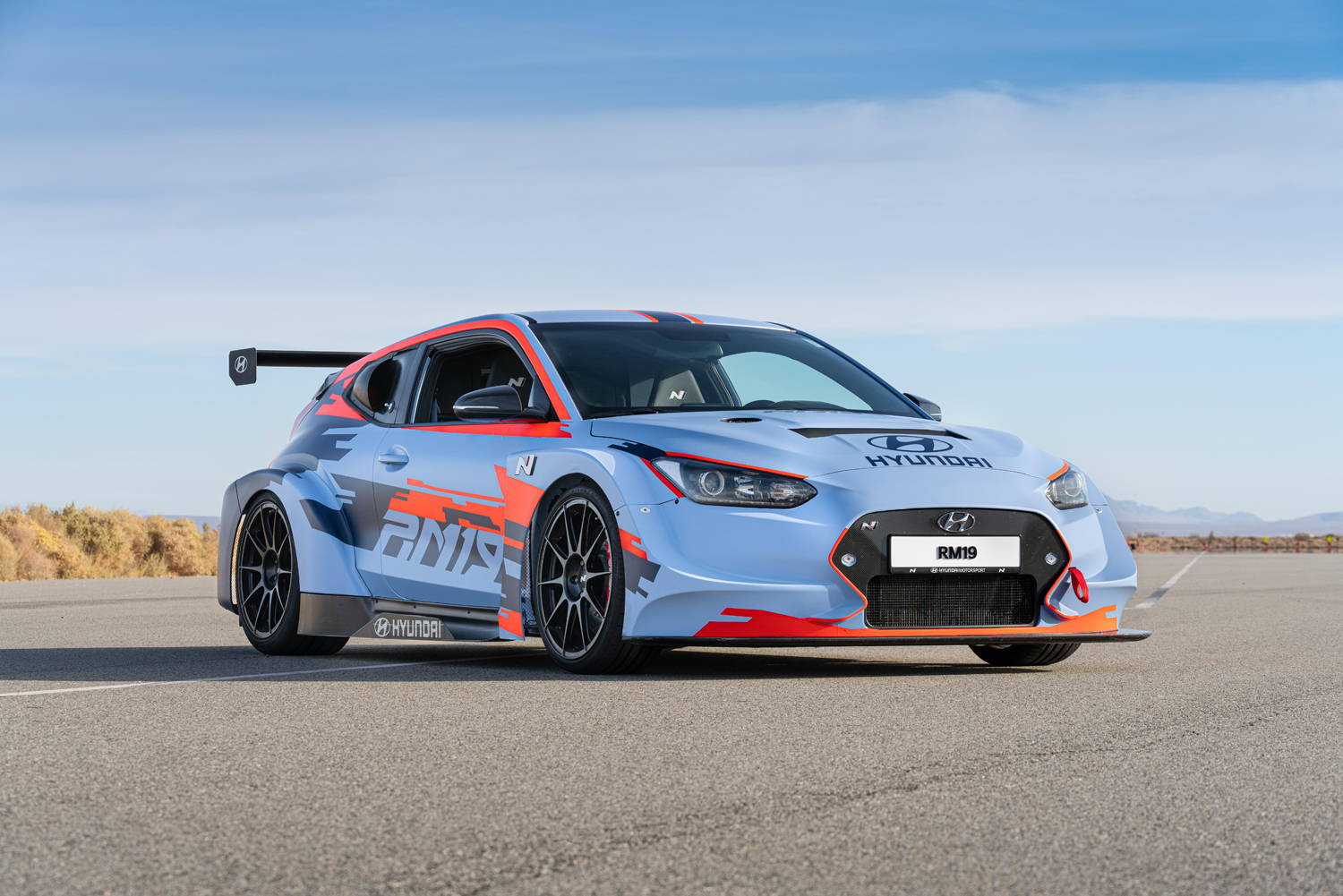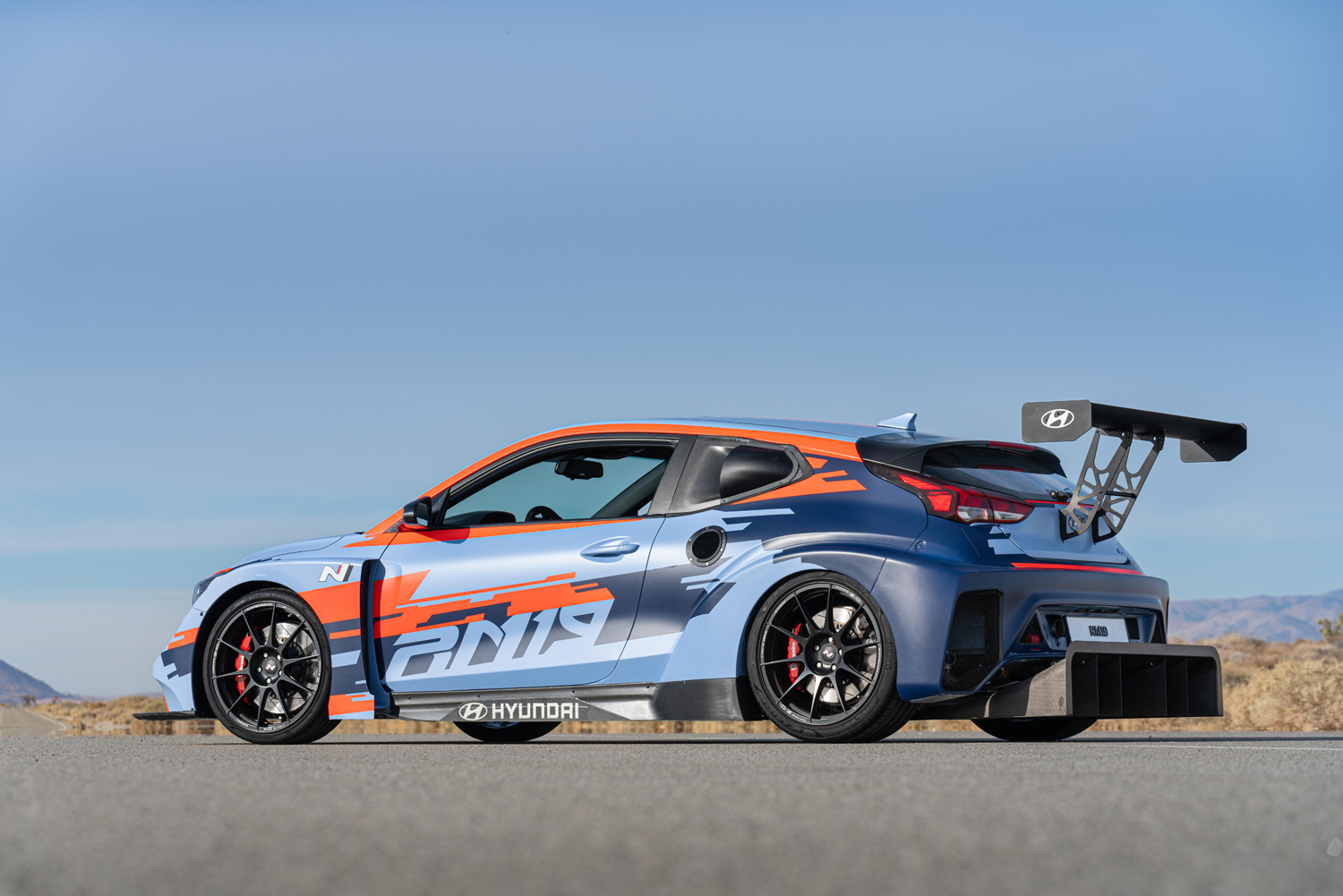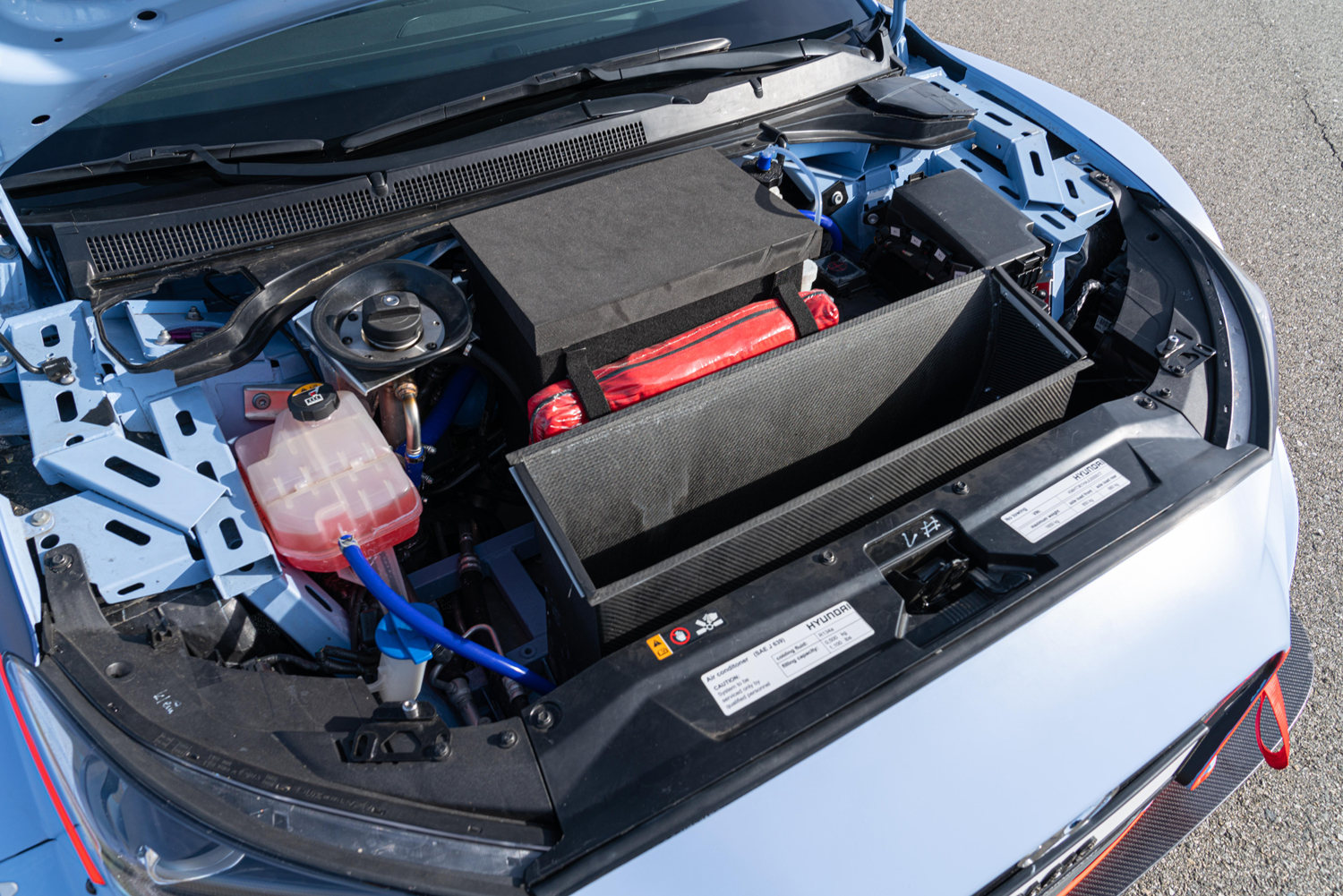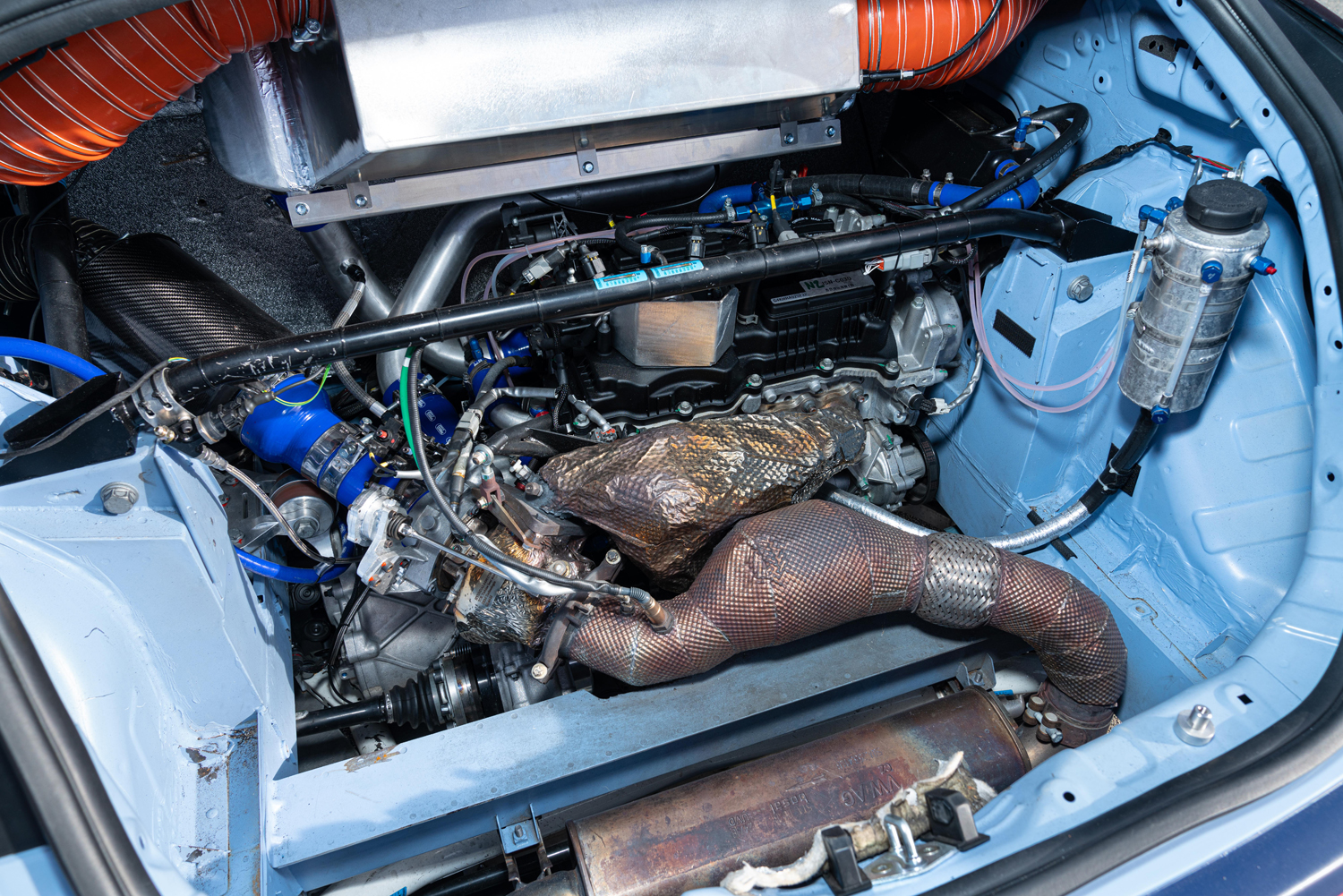Hyundai Motor Company introduced the RM19 Racing Midship Sports Car at this week’s Los Angeles Auto Show. RM refers to the prototype’s “Racing Midship” body configuration. The mid-engine layout is designed to provide improved handling balance and agility. Hyundai has been developing this project since 2012 as part of its “N” sub-brand for performance vehicles.
The “N” in Hyundai N stands for Namyang, South Korea, home to Hyundai’s global research and development center, where the N concept was born, since 1995. It also refers to the Nürburgring, home to Hyundai’s European test center. The Hyundai N’s high-performance technologies are honed at the iconic Nürburgring Nordschleife. Each car taking part in Hyundai Motor’s accelerated durability tests will lap the track 420 to 480 times in both wet and dry conditions, simulating up to 110,000 miles of severe driving.
Hyundai stated that since the initiation of project RM and the evolution of the RM series (RM14, RM15, RM16) and an electric super-hatch, RM models have performed extensive road testing to validate newly developed technologies, observe their effects on performance, and improve them for subsequent application on future N models.

“The RM platform is a versatile engineering test bed, allowing effective evaluation of various powertrains and performance levels, all on normal roads and environments,” said Albert Biermann, Hyundai’s head of global research and development. “Throughout the evolution of the RM series, our engineers have gained tremendous hands-on knowledge of high-performance vehicle dynamics with various front-to-rear weight distributions coupled with the effects of a fully weighted, high-strength body structure on vehicle performance,” he added.
The RM19 is powered by a 2.0-liter turbocharged, direct-injected engine with an output of 390 horsepower. It’s expected to yield impressive zero-to-60-mph performance, with a time under 4 seconds. The RM19 shares the 2.0-liter turbo engine with TCR-class race cars from Hyundai N development. However, unlike TCR race cars, which are affected by balance of performance adjustments, the RM19 offers extra boost of its output without these BOP restrictions. Hyundai says the RM19 offers race car-like levels of performance, balance, braking, and grip while retaining daily roadgoing capability.
“The RM19 sports car signals future brand aspirations for Hyundai’s high-performance N brand, solidly moving N into the prestigious arena of supercar-level performance,” said Thomas Schemera, executive vice president and head of Hyundai Motor Group’s Product Division. Here’s to hoping it reaches production sooner rather than later.





